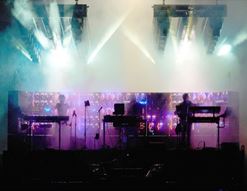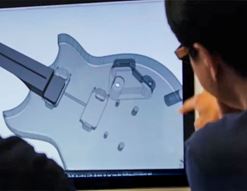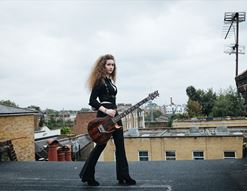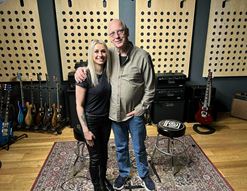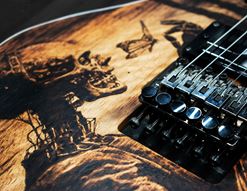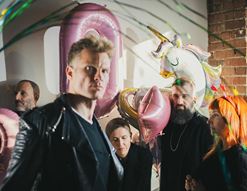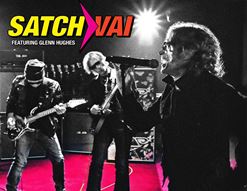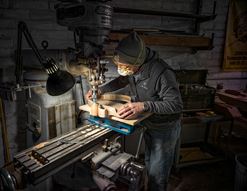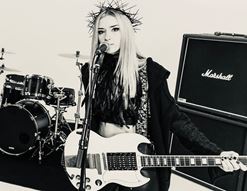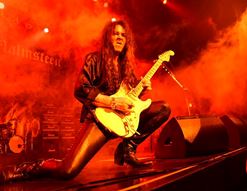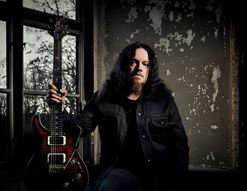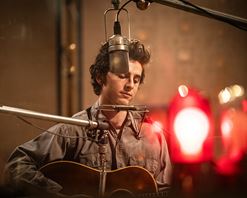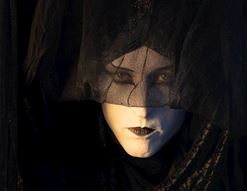Going from extreme Death Metal to Floydian-prog could be considered quite a stretch. Even the most open-minded music fan would have difficulty mentally picturing these two worlds of music gelling together in any kind of satisfying way.
These people have clearly not heard Opeth.
Opeth are indisputably a heavy sounding band, there’s no mistaking that. But there is a grandeur, an epic frame to their music that transcends any one genre and solidifies Opeth as being one of the most successful and influential bands of the last 30 years. Even at their earliest moments, on records like Orchid, their technically demanding music prized beauty alongside brutality.
Their game-changing moment came with 2001’s Blackwater Park, an ambitious record that saw guitarguitar-favourite Steven Wilson in the production chair. Blackwater Park’s material had more quality-ideas-per-song than most Metal bands could muster for an entire album, with quality levels in terms of riffs, solos, drums and arrangements super-high.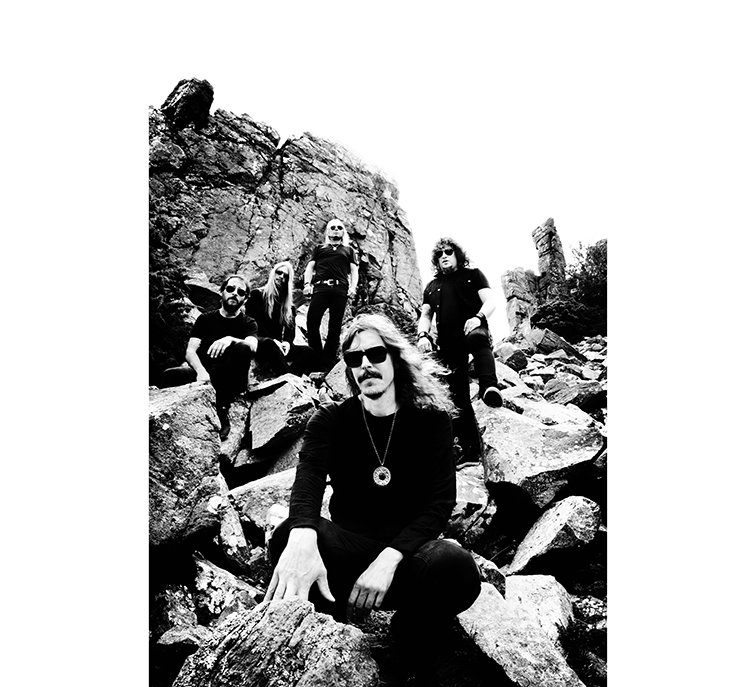
In more recent years, Opeth have developed their sound somewhat. Though still monstrously heavy when they want to be, lead member Mikael Åkerfeldt has steered the band into ever-more ambitious waters. Records like Pale Communion and The Sorceress have seen Opeth blend symphonic elements, organs, synths and more into an intricate (to be fair, it was always intricate) sonic tapestry that quite frankly thrills. Not many people can play music of this calibre, let alone write it!
Current-era Opeth records no longer contain the guttural, demonic ‘growl’-like vocal sections of before, replaced by more of the melodic, clean singing that has always been part of Opeth’s sound. Some of the band’s more militant metal fans will never forgive them for dropping the growls, but for everyone else, the ‘Prog-period’ Opeth of today sound quite simply exceptional: a complex band at their zenith.
Mikael Åkerfeldt, in addition to being a visionary songwriter and intimidatingly skilful player, has also revealed himself to be one of modern Rock’s great vocalists. Guitarist Fredrik Åkesson has been able to really spread his wings and express himself fully, resulting in some of the most exciting lead guitar moments we’ve heard in years. All of this works in service to the overarching vistas of their grandiose, exceptional music, making Opeth a band to cherish.
Two years ago, we were fortunate enough to gain an audience with Fredrik and Mikael for a video interview (check it out above). This time, we were able to catch up with Fredrik for a chat, not long before Opeth took the stage for what is, to date, their most ambitious live show. They were in town to support and promote their expansive and exciting new record, In Cauda Venenum. Uniquely, this album has been recorded as two entirely separate versions, with both English and Swedish vocals, a first for the band (and perhaps anyone else...).

It was a mild, dry night, which is always a bonus when trekking to a gig! Opeth’s awesomely decorated truck sat outside the venue, a converted warehouse by the river Clyde. I got in touch with Opeth’s Tour Manager and made my way around to the stage door area. Lots of people milled around chatting, eating and laughing and, after a brief ‘Slaughtered Lamb’ moment when everyone stopped to ogle at the fresh interloper, I found my contact, Steve. Phew!
Steve remembered me from last time and showed me to a vacant dressing room to await Fredrik. Sometimes these moments can be tricky to navigate, but my previous history with Opeth allowed a more restful pre-interview state on my part. Plus, I already knew Fredrick to be a very laid-back, genuine person. I was looking forward to it!
A minute later, Steven brought in Fredrik, who was as warm and friendly as before. We sat on a couch, I hit ‘record’ on my iPhone, and the rest went a little something like this...
Fredrik Akesson Interview
Guitarguitar: Yeah, so it’s just gonna be guitarists talking about guitars.
Fredrik Åkesson: Ah, the best interviews! Finally, something important to talk about! (laughs)
GG: Yes! Haha! So, I figured we should probably focus on the new record, right?
FA: Yep.
GG: Now, am I going to pronounce this right? In Cauda Venenum.
FA: That’s great, man. I don’t know Latin either!
GG: Hahaha! We’ll go with that then. So yes, well, before we get into specifics about the songs, Opeth often have an overarching concept to a record, Is that the case here? Is there a narrative? I know it means ‘poison in the tail’, more or less...
FA: Yeah: ‘Poison comes at the end’, like maybe that’s the meaning. I think it has a little to do with us putting out two versions of the album, one English and one Swedish. And it would be cool to have, for the first time, a Latin title.
GG: Since its neither.
FA: Since it’s neither, exactly. So that’s a bit of an idea, but, I mean, lyric-wise, it’s not a concept album. It’s different contents. It’s not overwhelming, like, happy lyrics, but it never is really, with us! (laughs)
GG: I don’t think you want overwhelmingly happy when you put on an Opeth record!
FA: No!
GG: Even looking at the artwork, with the house...
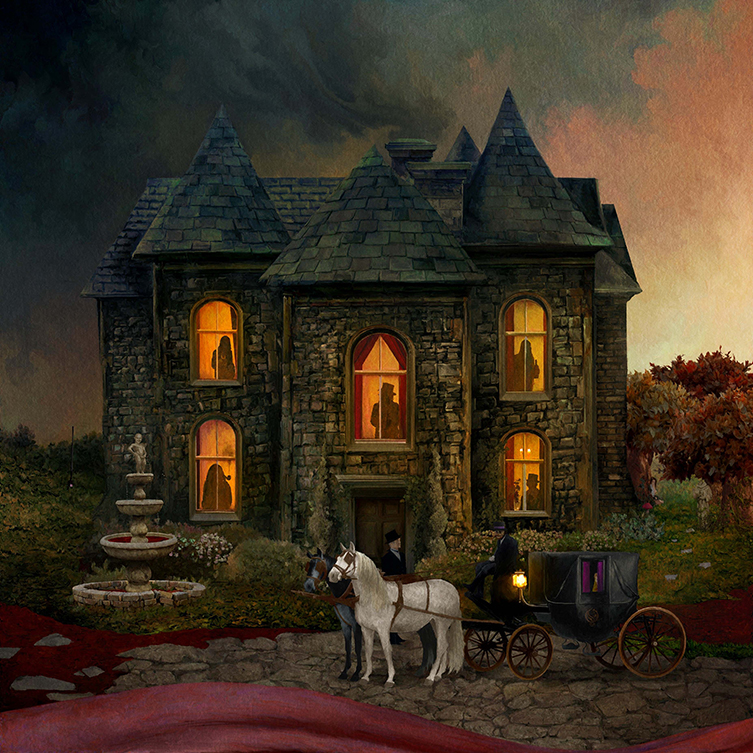
FA: Yeah.
GG: I take it that’s the band members at the windows?
FA: It is. You can recognise actually, who is who. I’m the guy with the pipe.
GG: I had a feeling that was you! And then, when you see the more extended artwork (also on the truck outside), there’s some sort of demon with its tongue out, and the house is on the tongue.
FA: Correct.
GG: So, what is the relevance to the house and the demon and so on?
FA: I think it’s up to the viewer to make up their own conclusions, maybe. But it’s like we’re on the demon’s tongue! (laughs)
GG: Haha! Literally!
FA: A bit obvious, maybe! Haha! We’re living in this house, in this community, on this demon’s tongue. And also, there’s a fun detail with that cover. The fountain outside the house: it’s a pissing boy.
GG: Yes.
FA: And that boy’s face is our manager’s face! (I laugh) I thought he was gonna get pissed about it, but he’s actually proud! That’s a pretty funny detail that not everyone will know about.

GG: That’s good, I’ll need to go back and look at that! So, I don’t know if it’s even relevant, but the cover art reminded me of Cluedo! You know, that vibe of these mysterious people in this big, dark house. It almost looks like a murder-mystery thing. Like a 70s kinda thing.
FA: Yeah, yeah! You know, we spend a lot of time with the covers and Travis Smith, who’s done the Opeth artwork since the Still Life album...
GG: Which was twenty years ago now!
FA: Yeah, and he’s still working with us and it’s a great working relationship. He and Mikael, they have a good working method. Initially, we had some ideas that the cover would be a green garden and we would be statues like Edward Scissorhands statues.
GG: Oh cool!
FA: But then this came up and I liked it. It reminds me a little bit of King Diamond, At the Gates-type art. Them!
GG: It does! The Them cover, yeah!
FA: But it’s different, though. And it has a lot of cool details if you look in the garden. When I was young, I’d buy Iron Maiden albums, I loved those tiny details.
GG: Like the (Iron Maiden) Killers cover, with all the things happening in each window!
FA: Yeah! We tried to keep that thing, that kinda magic thing when you buy vinyl and you look at the details.
GG: Yeah, it’s a very ‘classic’ album cover: as soon as you see it, you know that it can’t be anything else.
FA: It’s got a vintage touch to it. We use quite a lot of the work in the live setting. We spent some time with our lighting designer Magnusson, and I think we’ve stepped up the game for this tour. We have a lot of content, like risers and screens beneath the risers and a big screen in the back, all synchronised.
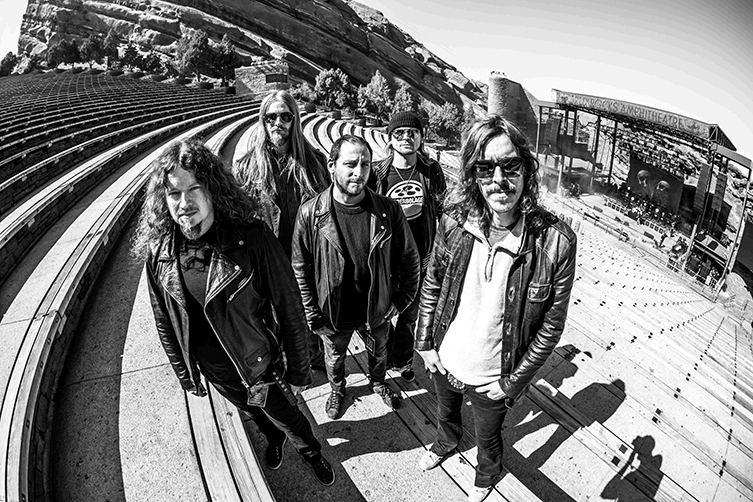
GG: Oh wow, that sounds wicked! Is that a first time for you guys? The risers and stuff?
FA: Yeah, and Martin Axenrot, our drummer, is placed in the middle now, on a higher riser so it looks more mighty, and he brought a gong as well. You gotta have a gong! (laughs)
GG: If ever you have an opportunity to bring a gong: bring the gong!
FA: It was funny, I spoke to Mikael and said: ‘Martin’s got a gong for the tour!’ ‘Oh, there’s no gongs in any of the songs!’
GG: There is now!
FA: There is now! Haha!
GG: Nice one. So, I’m assuming you’ll be playing a few of the new songs on tour?
FA: Yeah, we play three.
GG: Three on them. Are they going to be in English or in Swedish?
FA: Actually, we decided to do them in Swedish, just for difference. So, there’s a bit of a question mark about it out there, but, then again, if you go to a Metal show, or Hard Rock-Progressive show, you don’t really pay that much attention to the lyrics during the gig, really.
GG: No, you either already know them, or you’re taking in the whole sound, right?
FA: Yeah, it sounds different from the English version, but we’ll probably alternate it in the future. Tonight is the third gig of the tour, it’s very new to us. But yeah, that’s what we do now and we’ll see how it goes.
GG: It’s quite interesting to have the option! Are the lyrics themselves different, between the languages? Because they can’t translate exactly, can they?
FA: Ah, we were quite lucky! The translation came about in the actual recording. We thought, mostly, that it wouldn’t be able to be directly translated, but luckily enough, a lot of the stuff could be directly translated, so the meanings of the lyrics, the contents, are very much the same. One word here and there might be different, but they have a similar meaning.
GG: That’s pretty good!
FA: Yeah, we thought we’d have more problems with that.
GG: So, this time round, I was reading, Mikael come up with a lot of the material without anybody knowing about it? Like, he was supposed to be on holiday and all of a sudden, all this new music came around. (Fredrik nods in agreement) At what point do the other Opeth members come into that, with the writing process?
FA: Well, we have a place, like a rehearsal room and storage and small demo studio where Mikael has his demo set-up. Like you said, we were supposed to have a break, but then he started, and I think he got some kind of ‘poison’, you know, he gets this addiction, you know? When you get driven on the results! Like a drug, almost, I would say.
GG: Yeah, yeah!
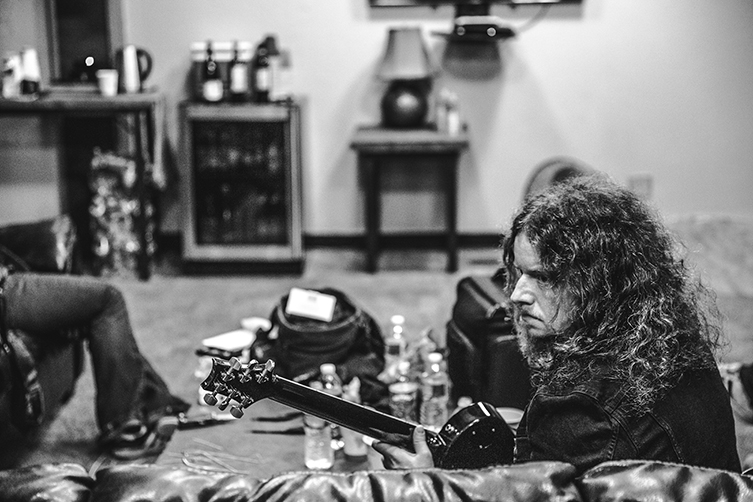
FA: And I usually hang out there, fix some guitar gear, try amps...so I guess I was the only one who heard stuff in the early beginning. And I also put down some solos during that period.
GG: Right, as it was getting put together.
FA: Yeah, at the demo stage. But he was quite isolated, definitely. Usually that’s how he writes. Everyone else got most of the songs at once when he was pretty much finished. Usually, we get three or four songs at least and then it carries on, but this time...yeah, like you said. I was the one who heard it a bit more, as I was down there and did some solos. But I had a gut feeling when I heard the first song he played to me, which is ‘All Things must Pass’.
GG: Which is the last song on the record?
FA: Correct, the very last one on the album. We’re playing it tonight as well.
GG: Oh, good!
FA: And when I heard that, I got the goose-bumps, really! I got a really good gut feel for it, like: ‘Now, he’s on to something!’. So, in a fairly short period of time, he wrote most of it, you know? He’s very disciplined: he starts at eight in the morning when he drops off his kids. I admire his work ethic. It’s fantastic.
GG: That’s really good to hear. But I was loving what you were doing on this album! I don't necessarily know, on an Opeth record, who plays what in terms of lead parts. I kind of assume it’s mostly you who does the solos, is that right?
FA: Yeah, it is, actually. It’s what he wanted, ha! ‘Sure, I can do that! I have nothing against solos!’ haha! I think he wanted me to take the more shreddy solos. Mike is doing some solos: he mostly plays the calmer solos, but I was happy because this time around he gave me different backgrounds to work with, with solos.
GG: Mmm.
FA: Playing more over chords and stuff like that. Like in the first track, Dignity, there’s quite a lot of chords, in a circle, so you can’t really be in your comfort-zone, your minor-pentatonic zone! (laughs) So when I did that solo, it was very improvised and I kept it for the album, I re-learned it. I wrote down a chord sheet and somehow, I came up with the platform for the solo and re-learned it before recording. On the second track, Heart in Hand, that’s me playing that solo. I wanted to go for a wilder type of approach. And also the fourth track, if you count the intro as a song, is a very epic track.
GG: What’s the title of that, in the English version?
FA: Uh, Next of Kin. That’s Mikael playing that solo. Then we have the ballad, Lovelorn Crime.
GG: That was the one!
FA: That’s me playing.
GG: That’s incredible playing. That’s a really good solo.
FA: That’s the first time I get to play a more emotional solo, thinking about the chord notes and stuff.

GG: There’s a lot of melody.
FA: Yeah.
GG: Is that improvised, or did you work that out?
FA: Umm, I kind of...the first half, which is in one key, I kinda improvised that, and there’s a major chord coming in, because it’s just D, and then suspended C, and G, I think. That’s the basic chord progression. With the G, I thought: ‘I have to land on those chord notes, use those’. It’s a bit of a Gilmour-ish thing, I would say. I thought about Comfortably Numb, that was the inspiration. I didn’t think about it when I did the recording, but I was trying to aim for something like that. Before I did the solo, in the demo stage, Mikael told me, ‘I want this to be the solo that people remember you for when you die’.
GG: Hahaha! No pressure!
FA: Exactly! The second half, we punched that in (overdubbed that specific part: Ray) because I put some thought into some melodies.
GG: So, do you sometimes work over and over until something catches your ear and you go, ‘Right, I’m gonna use that bit’, and then you go on and get another bit and so on?
"Before I did the Lovelorn Crime solo, in the demo stage, Mikael told me, ‘I want this to be the solo that people remember you for when you die"
FA: Yeah, sometimes, but usually, I always think, in the demo stage, I’ll just play something and then I’ll take it home and try to do something fantastic, re-work it and think about stuff. But then after a while, usually you get used to the solo. Then, I end up playing a similar solo to the demos, but I usually re-learn them, then I pimp up some of the details.
GG: That’s a good way of putting it! It can be that way where you become so familiar at listening to the demo, that you can’t even come up with something else because you keep going back to the first one in your head!
FA: It’s a bit dangerous! I think maybe I should just play really lousy solos first! Haha!
GG: Haha! But the other thing is, your first solo, you’re not really doing with any pressure, right? You’re just sticking something down for reference.
FA: It could be that too!
GG: That gives it it’s wee flair.
FA: Thinking too much about stuff might not be so good.
GG: Not always.
FA: Not always. If you’re a Jazz player, have to think ahead all the time, like be-bop layer, that’s difficult, because you have to do that all the time.
GG: It’s a whole different headspace.
FA: Definitely.
GG: One of the other solo bits that I really loved was on Continuum. It’s like a Wah-wah solo: was that one of yours?
FA: Yeah, that pretty aggressive solo.
GG: Yeah! I was gonna say, there’s a real thing to it! Even the first kinda (attempts to recreate an angry wah sound with vocal chords), it’s got a really kinda ‘fuck you’ attitude...
FA; Yeah, that was the energy I was going for! I try to bring out different energies in solos.
GG: I think, if that’s what you went for, it was really successful!
FA: Oh, cool!
GG: It’s really clear, it’s not just ‘time to shred’: it’s a real statement.
FA: Ah, I’m happy you like that. It was, in that particular solo compared with the demos, a lot of stuff that was left in was improvised. I left that one more open, apart from the beginning, maybe.
GG: Does that help with the energy?
FA: Yeah. And trying to step out of some different Modes...I love those, when you use the Modes: that’s something that I’m very much working on, when we’re off, to get deeper into that. You wanna get deep so you can do it on the fly, without thinking about it, which you probably do sometimes without thinking about it, also! But, probably the best of it comes out in a natural way.
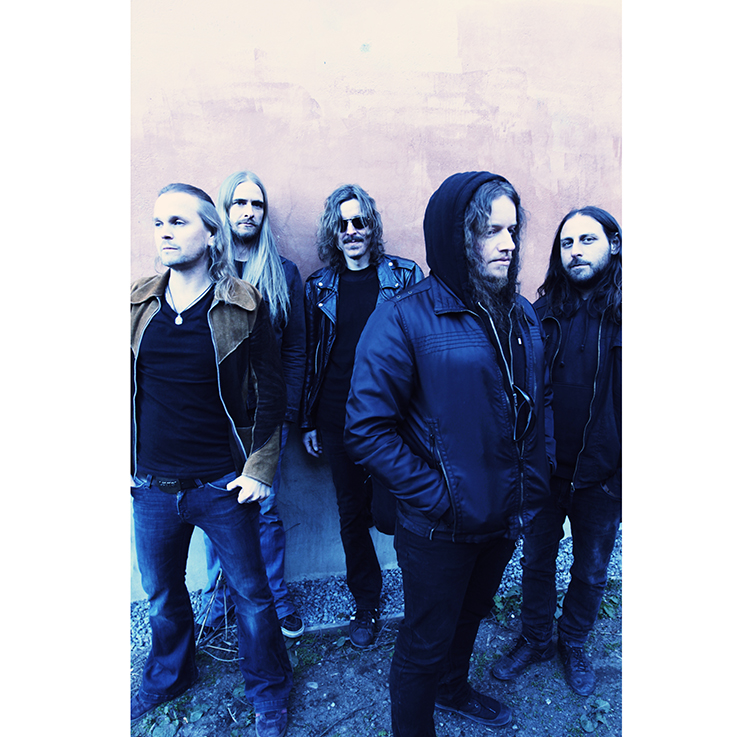
GG: Yeah, so you make it so that it becomes more like an automatic choice, when you just want that colour of a sound, rather than going: ‘Time to find my E Phrygian mode!’ and referring to a chart and thinking: ‘that’s what I’ll play!’
FA: Exactly. Yeah, you might not be aware of what mode it is, but you feel the colour of the mode.
GG: Absolutely.
FA: That’s probably the beauty of modes, in a way, if you can reach that.
GG: You become familiar enough with them to be able to select the colour you want from the palette and then throw it on the canvas.
FA: Yeah.
GG: Cool! Obviously, a famous thing about the Opeth sound is the sense of dynamics: there’s always a wide range of things to hear in an Opeth song, but dynamics really play a big part. One of the things I hear coming into the music more and more is non-guitar instruments: keys, synths, even wind instruments and such. Does that make it more difficult for you to find space for your guitar parts? Or do you actually quite like having them there to play off?
FA: I always, at the mixing stage, moan about ‘turn down the keyboards, turn up the guitars’! (laughs) It’s always a battle! I’m the guy who’s always pushing for that. But on this album, the goal with this album was to make as epic an album as possible.
GG: Yeah.
FA: And so, there’s a lot of, as you mentioned, stuff that needs to fit within the sound-frame. We have a 23-piece string orchestra on it.
GG: I was gonna ask about that: that’s a genuine orchestra, then?
FA: Yeah, it was recorded in London by Dave Stewart, who we worked with on the Pale Communion album. So, he conducted and re-wrote the MIDI files that Mikael sent him.
GG: Ah, I understand! So, he transcribed and scored it, basically.
FA: Scored it, yeah. And recorded it. So, we really didn’t want to take any shortcuts on the album: everything has to be the real deal. We have the mellotrons, Hammond organ and Hammond pedals! And then, on the ending of Next of Kin, I was like: ‘We have to turn up the guitars, goddammit!’ (laughter) But there was so much stuff in the room, I had to take one for the team there, but a lot of the other songs, I managed to get it.
GG: Nudge the faders a little bit.
FA: Yeah! And the solos as well: I’m happy with the balance of those. They go through, yeah. But it’s difficult, when you have a distorted Hammond organ fucking with the guitars!
GG: It’s a very similar frequency range.
FA: It is.
GG: It’s like they’re trying to steal your job.
FA: Yeah. Damn keyboard players. But I like the way we use Hammond organs, the way they don’t play the same parts as the guitars. It’s better that they play something else.
GG: Counterpoint or drones or something.
FA: Yeah, so, it’s difficult! But I think it’s different on this album, but there’s still a lot of guitar work.
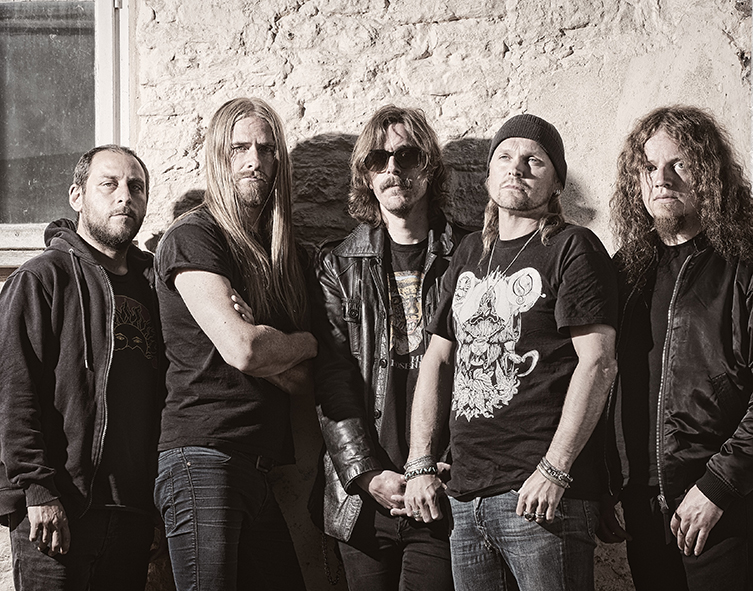
GG: There’s loads! And quite a lot of acoustic guitar, as always with Opeth.
FA: Yeah.
GG: Do you tend to play acoustic when you’re at home, away from the Opeth guys?
FA: More electric, yeah. Sometimes...I should play more acoustic, actually, but, uh...
GG: Should you? Hahaha!
FA: Haha! Recently I got a little wireless set up back home, so I can walk around. Stand up and play. Sometimes, if we’re off tour for a year, I sit down and play but usually, what are you going to do on stage? You stand up and play, so it’s better to practice standing up. And it’s healthier for you: if you’re sitting down for several hours, it’s not very good for you.
GG: That’s a good tip.
FA: It’s also more fun!
GG: Bring the stadium to you!
FA: Go out to my balcony and do whammy bar dives! Say hi to the neighbours! (makes divebomb sounds)
GG: Haha! That’s what it’s all about! So, the new record, it’s heavy, as all Opeth albums are, but this is heavy in a different way. If you listen to (Opeth album from 2002) Deliverance and then this, it’s a very different type of sound.
FA: It is.
GG: Earlier, you mentioned about making the most epic-sounding album possible. I think all Opeth albums are already pretty epic sounding to begin with! They’re all pretty huge and impressive. Was it a deliberate decision to make In Cauda Venenum sound different? Did you turn amp gain down, or use different frequencies? How did you achieve this overall different sound?
FA: Well the guitar amps is a funny story, because I’ve been working with a Swedish company called Olsson Amps.
GG: I read about that, the guy lives near you, yeah?
FA: Yeah! They have a pod called guitar gigs, with a workshop there. He’s a guitar builder and an amp builder. He released an amp called Little Hill, which is a 20-watt EL84 tube head. I’m very happy with the gain structure. Before we went to the studio, to make a long story short, John (Olsson) approached me and said: ‘If you like, we can take that thing that we worked on and put it in a hundred watt head, with EL34s.’ ‘Yeah! I’ll try it!’ We tweaked it, because it’s different transformers and stuff, so that will of course affect the overall tone. But he did that, and we brought it, compared it with other amps, and that won the marathon. So there’s only one head like that.
GG: Oh cool! And have you brought that out on tour with you?
FA: No! I’ll tell you what we use on tour, but first, we used that (the Olsson amp) on the song Charlatan. We only played bass, me and Mikael.
GG: I wondered about that: whether it was some sort of octave device or an 8 string.
FA: It’s a bass in standard tuning, super-distorted through this guitar amp. And that was, luckily, the last track we did the rhythms for. Mikael and I play left/right bass, with Martín Méndez playing bass in the middle.
GG: Oh, that’s cool to know for when I go back and listen to it again.
FA: Yeah! And then something happened with the amp, after that. This bias for the tubes just went somewhere, so we used the Friedman BE-100 and some Marshall Plexis for the leads, which work great.
GG: The Friedman stuff’s pretty ace.
FA: Yeah, well we use that live now. We were with Marshall but now with the Synergy.
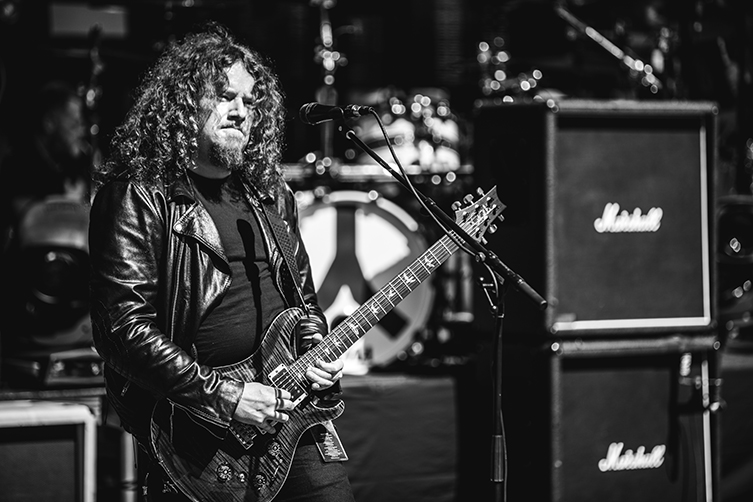
GG: Ah, Synergy! We sell those.
FA: Yeah, which Friedman is involved with.
GG: The modular stuff?
FA: Yes. We have their power amp, and you know you can put in different preamp modules, so we Syn-2, in which you can fit two modules, and it has an effects loop, a Sag control with a tube in it as well.
GG: That’s right.
FA: So what I went for was the Friedman Dirty Shirley for clean and Classic Rock tones, and the Soldano for heavy rhythm and heavy leads. We are super-happy with that stuff! Initially, the idea was to only use it for fly rigs (one-offs gigs like festivals when Opeth cannot take all of their own equipment and travel by aeroplane) cos we didn’t want to use the digital solutions but we liked them so much, now we have them as the main rigs!
GG: Last time we spoke, it was Marshall JVM’s I think...
FA: We still use those...
GG: And you had the Fractal Ax-8 for Fly gigs.
FA: Yeah.
GG: So these Synergy amps...Soldano: have you had much experience with their amps?
FA: Not much, I had always heard of them: Gary Moore used Soldano for a while. It’s an incredible amp, it reminds me of the Marshall tone when it goes to 13 or something, but it’s so quiet: you don’t need a noise suppressor, even at very high gain! I’ve never heard a high gain amp that quiet. I don’t know if the actual amp is the same, but this has a nice tone that works with you, I think. I like it. Using in-ears, it’s so delicate, also.
GG: So, you get a good personal on-stage sound.
FA: I think so, yeah. And we used to use the Box of Doom (for more on this, please see the aforementioned video interview we did with Fredrik) but we took it off because it (the Synergy) sounds best with one cabinet at 16 ohms. We had to split it: one to the cabinet and one to the box of doom. We did a London gig two days ago and said: “Oh, skip it. We’re not going to use the box of doom”. Just mic the cabinet, which has a combination of V-30 and (Celestion) Greenback, so it has two different speakers in it.
GG: Brilliant.
FA: So, we put a flat mic on one of them and a (Shure SM) 57 on the other. But I use a pedalboard now with just a bunch of analogue pedals, and like a loop system, as there would be too much tap-dancing! Since we’re also using the piezo setup, we have to jump between.
GG: That’s in the PRS’s?
FA: Yeah.
GG: And does the piezo just go straight into the PA system?
FA: Yeah, through a line box and through the PA. So we don’t put any reverbs or compressions on those sounds: Front-of-house does that.
GG: Nice! Good for production-levels. So, PRS guitars: is it still the Piezo Custom 24?
FA: On this tour, I switched a bit. Since I was initially a Les Paul guy, I like to have the whammy bar, but usually (makes dive-bomb sound) I end up doing that stuff (laughs)! So, I’m using the PRS 245 piezo, the P-245, as my mains now. I have a Black one with a Maple neck and a...sunburst-ey...gold, Black Gold flame one also. So those are the mains, but I bring out a Tremonti model for a song called Nepenthe, which has a solo with a whammy bar which was a bit Fusion/Allan Holdsworth-inspired.
GG: Nice, from the Heritage album.
FA: Yeah. I can’t really play that solo but I’m goofing off with the whole thing! (laughs)
GG: So, it’s totally PRS for you, live.
FA: Yeah, live. But in the studio, I think you can use whatever. I think the old pieces of wood win the run in the studio. Like in Park Studios, where we did In Cauda Venenum, that have Strats from 1958. On this song Heart in Hand, which is quite a heavy, riffy track, we actually used Fender Mustangs!
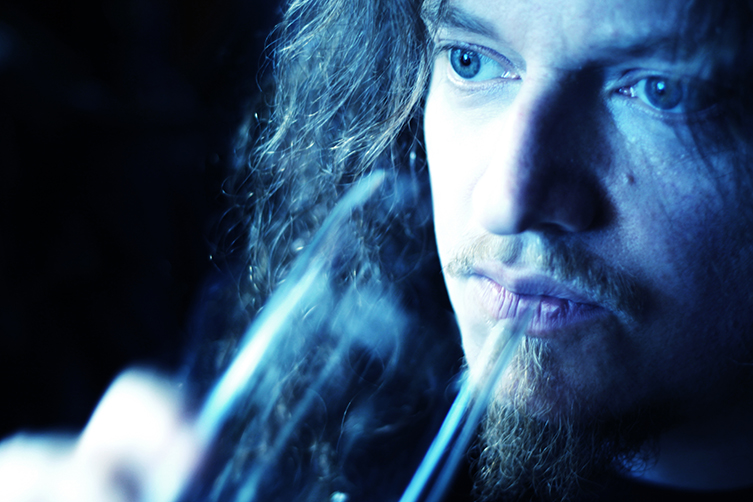
GG: No way!
FA: With the single coil. Martín used the Hofner Violin Bass, and weirdly enough, those were the instruments that sounded the most brutal and just cut through the sound mix of the sound.
GG: That’s interesting, because that goes back to my earlier question about what made this heaviness a different heaviness: that’s kind of it! Using old, vintage Mustangs is a world away from a modern PRS, right?
FA: Yeah! That would surprise you! Using a humbucker, you might think you get the fattest tone, but you have to cut through these Hammonds and everything. That could be one of the reasons for the different sound. That kind of ties that question up, actually! (laughs)
GG: There you go! Haha! In terms of strings, is it ten-gauge strings you still prefer?
FA: Yeah, ten to fifty-two. We are also mainly Standard-tuned.
GG: Is that even for the older stuff? Drop-D was as low as it got, wasn’t it?
FA: No, it’s always been Standard, from the first album. But, on the Ghost Reveries album, there is an open tuning, which is D-A-D-F-A-E, so Open D tuning, but the high E string is still an ‘E’, instead of a ‘D’.
GG: I understand.
FA: So, we play one of those songs tonight, and I bring out the PRS P22 for that track.
GG: Now, I’m going to guess: is that the Harlequin Forest song?
FA: Correct!
GG: Great song!
FA: We switch out the setlist a lot for this tour. Harlequin, I love to play.
GG: It’s a great song. I personally hope that we hear a little bit of Deliverance later, but don’t tell me, I’ll wait and find out!
FA: Okay, I won’t tell you!
GG: Now, I remember from last time that your plectrums were 1.14mm?
FA: Yeah, I tend to switch between 1.14mm and 1.40mm.
GG: Oh!
FA: Dunlop picks made me both.
GG: And when do you require the 1.40mm?
FA: I haven’t decided! (laughs) I go back and forth. But if it’s a lot of rigging, I prefer the 1.14mm. Sometimes, it kind of varies. I only have one bag of the 1.40mm so I’m sparing those. There’s a lot of psychology, I think!
GG: I get caught up in plectrum choice quite a lot!
FA: In the studio it’s quite interesting though: it can vary the sound quite a lot.
GG: I think so!
FA: When you record a part, it’s like: ‘try a thinner pick’! It could be something that’s really cool.
GG: It’s just: you can’t rely on it live, you need to have something familiar.
FA: Live, it (the tonal difference in plectrum choice) doesn’t matter. It’s quite amazing that the pick can alter the tone when you record.
GG: They make a difference!
FA: Yes!
GG: Because a lot of your playing is obviously quite technically demanding, do you still have to do a lot of just straight-up practice?
FA: Yeah, well I mean, I love to try to develop all the time, so I do play a lot, even on the off days, like yesterday I played 2 hours.
GG: Wow, ok!
FA: But there’s a lot of time to kill on the road. You might as well spend it playing, so now I always have a guitar on the bus. I usually wake up early so I can just go and...
GG: Make some noise!
FA: Yeah! There is so much stuff on YouTube if you need some inspiration. Find some licks and stuff. Get inspired and try and make it into your own, you know?
GG: Yeah, that’s good to hear! Because, uh, some people think that once you’re good, you stay good. But you have to work at it, don’t you?
FA: I mean, I don’t think you should be satisfied with your back of tricks: you can always have more tricks in your bag!
GG: Exactly! Well, that’s me nearly done. I had one last question, and it’s a fun one!
FA: Yeah!
GG: You’re a Metal guy, so without thinking, straight away, what is the greatest guitar riff ever written?
FA: (Stops to think for quite a while)
GG: Now, this constitutes ‘thinking’!
FA: (laughs) Yeah, that’s a lot of thinking! (Another long gap of silence...) Oh, OK, it has to be...(another long silence...) What do you call that Black Sabbath riff? (He begins to hum it and I join in, making this recording on my phone technically a collaboration between myself and Opeth, though perhaps not one that anybody needs to hear...)
GG: Into the Void!
FA; Into the Void! That’s my choice. If you asked me tomorrow, I would have changed my mind. I was thinking about ‘Into the Arena’ with Michael Schenker there.
GG: That’s a good one, too.
FA: But there are so many riffs to think about. Judas Priest!
GG: Iron Maiden.
FA: Yeah! Princess of the Night by Saxon!
As Fredrik selected his favourite Metal riffs, Steve stuck his head in the door to indicate that time was up. We said our goodbyes and Fredik headed back into another room. I thanked Steve, pulled up my collar, and headed into the large graffiti-daubed yard of the venue. The night was bright and full of Halloween potential as costumed and non-costumed gig goers made their way to the venue’s entrance.
Could there be a better choice for a Metal show on Halloween night? Rob Zombie, perhaps, but his glam-trash Metal (which is awesome) lacks the romantic sweep and grandeur of Opeth’s vast catalogue.
That evening, I saw first hand what Fredrik had described earlier on. A huge video screen behind the band showed elliptical, illuminated, atmospheric images of fire, woodland, sparks and lightning. The central drum riser’s own screen gave the effect of a floating drum kit. The band were bathed in comparative darkness, apart from frontman Mikael, who was wearing a mean wide-brimmed hat and had plenty of dry witted comments for the loud and enthusiastic audience.
The setlist was perfect, highlighting multiple strengths from the band’s back catalogue. If you like skilful songwriting, incredible dynamics and serious levels of top guitar playing, Opeth will be a pretty unstoppable choice for you.
And yes, their last song was indeed Deliverance!
In Cauda Venenum is out now. Opeth are on tour right now: check it all out on the Opeth website.
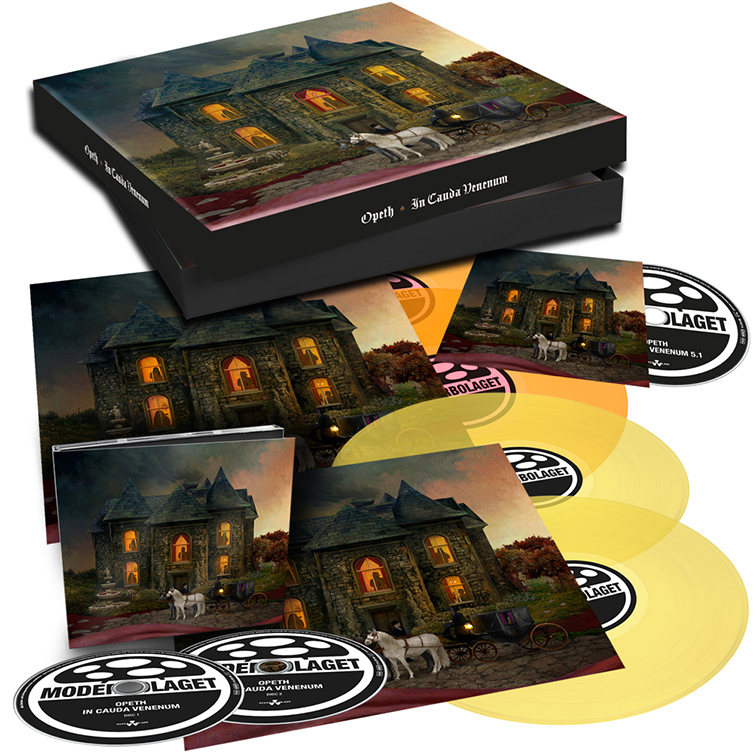
We’d like to thank Michelle Kerr, Kirsten Sprinks and Steve for all of their help in setting up this interview, and of course to Fredrik for having a fun and interesting conversation with us!
Thanks for reading, as always.
Until next time!

